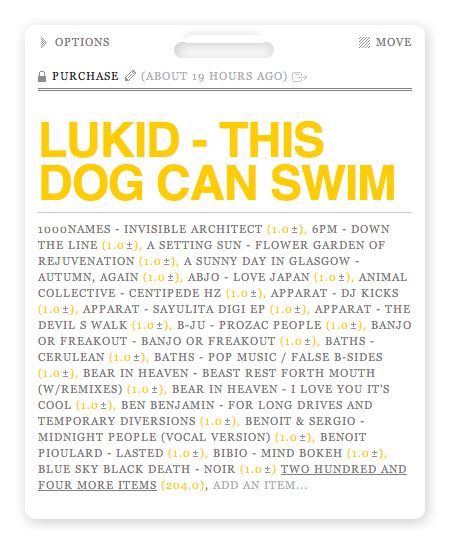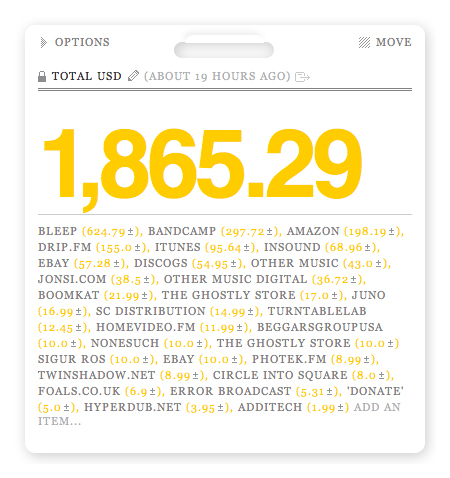My old buddy Nick Felton spends a lot of time tracking his every move. After years of hanging with him knowing at the end of the year my stats would also in some way be immortalized in that years annual report, I decided to make use of one of the tools he created to track all that data: Daytum. It might be old news now, considering he’s moved on from Daytum, but it’s taken a while for the type of data I’ve been tracking to reveal something, hence the late-to-the party post.
I started obsessively keeping track of all of my music purchases via Daytum mostly just to keep tabs on myself – to make sure I was in fact supporting artists like I claimed I was.
But most telling to me is how the formats break down. Having moved a few times recently with a pretty hefty record collection – and a slow shift to “digital djing” (cue the purists), my buying habits have have clearly shifted towards downloads.
It may be a hold over from the vinyl and cd days, but no matter how hard I try, I can’t commit to the Rdio’s and the Spotify’s out there. I need to have the thing, be it physical or digital. I need to know it’s with me here, preferably in lossless format, taking up space somewhere – even if it’s just bits on an external hard drive. Loads of them.
I’m excited to see the label roster over at Drip.fm grow – it’s the perfect subscription based, lossless downloads model in my opinion.







Really hoped this post was about Felton picking the project back up. Used to use it to track my daily life, but it eventually just became too much hassle.
I’d love to see a Daytum redesign. I’m sure with recent UX development (especially on the mobile front) there would be some room to improve on inputting data.
I’d love to see them resume work as well. Did you ever use the iOS Daytum app?
I feel the same way about Rdio and Spotify. I just can’t get into it! Thanks for sharing the info about Daytum, it looks interesting.